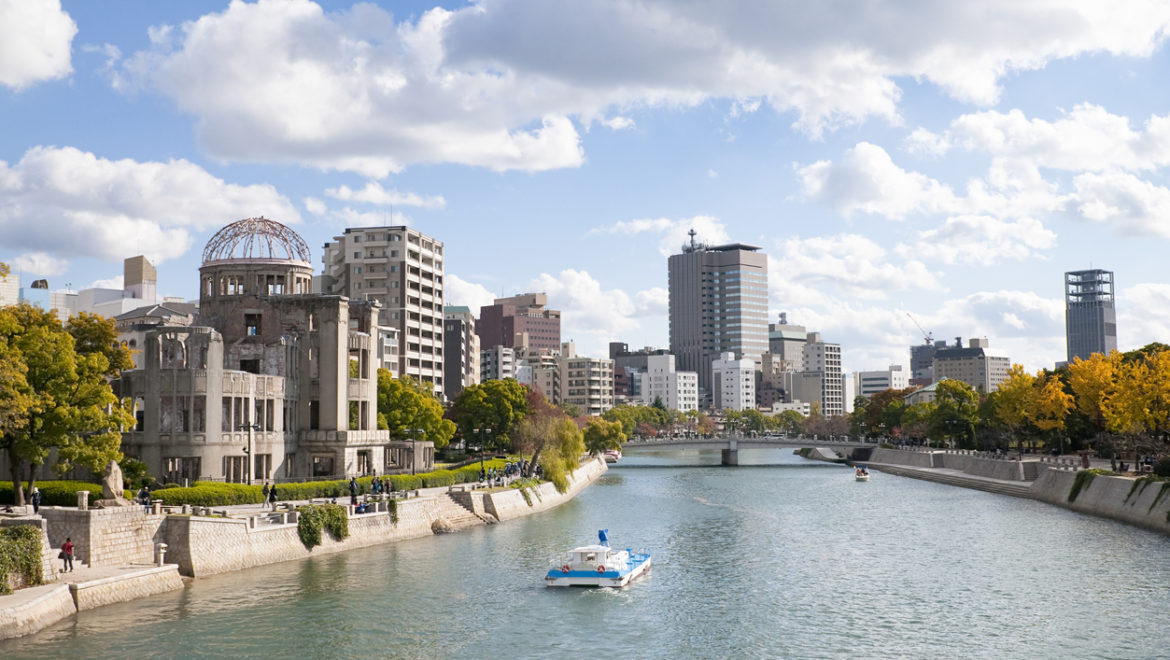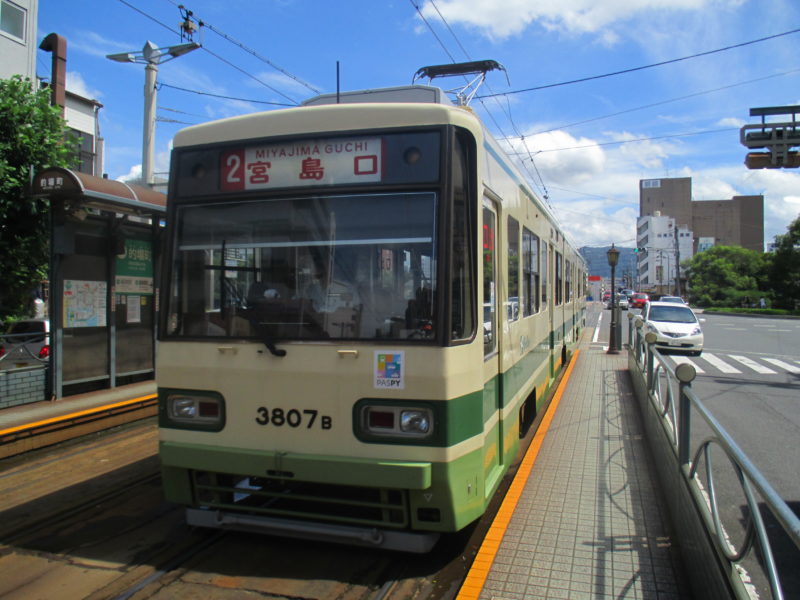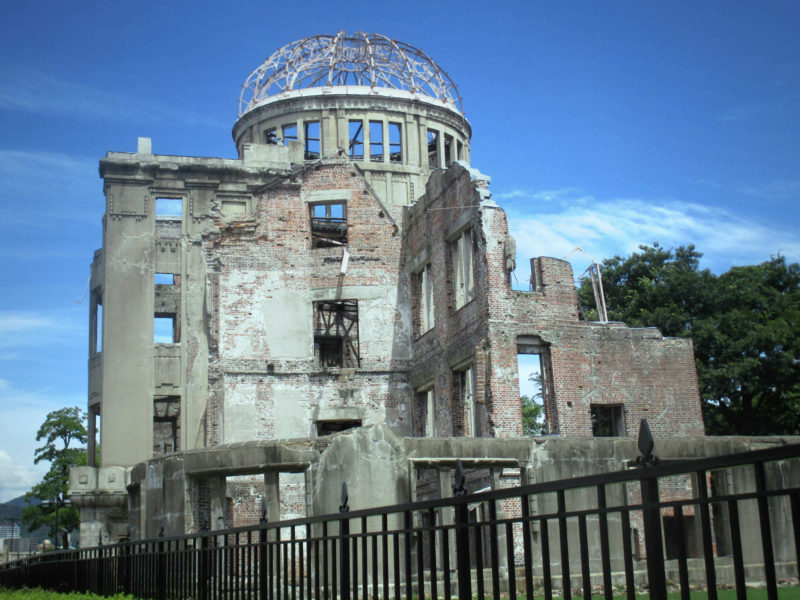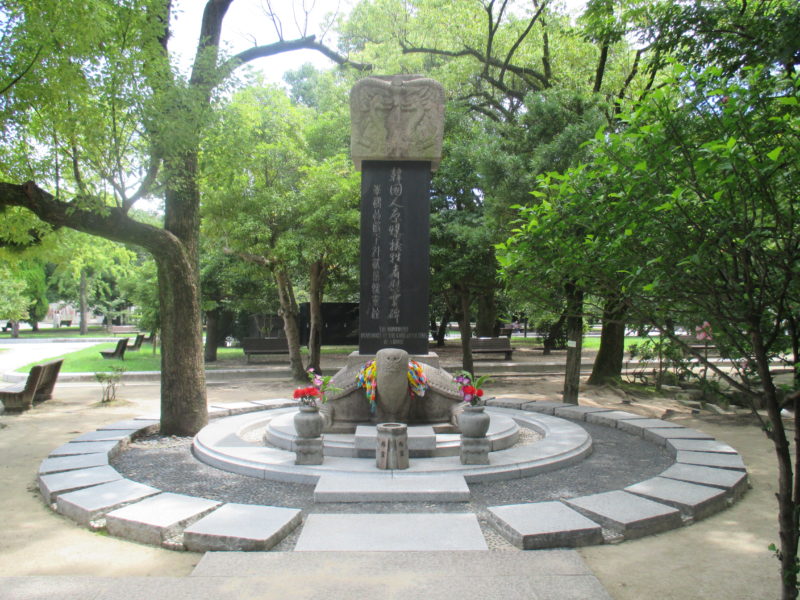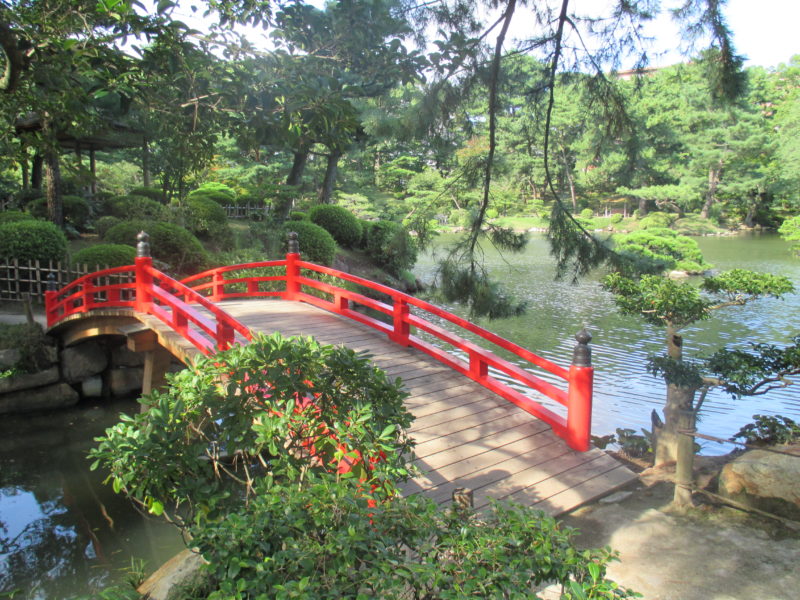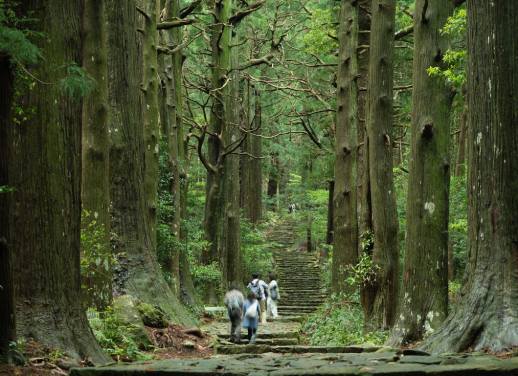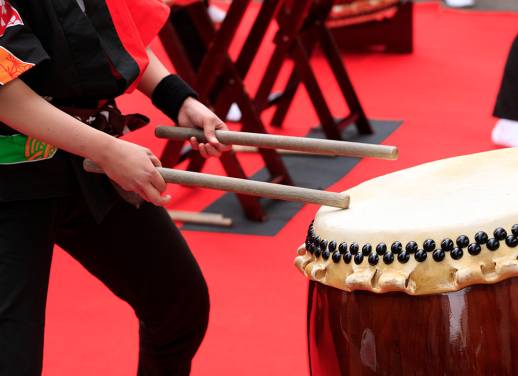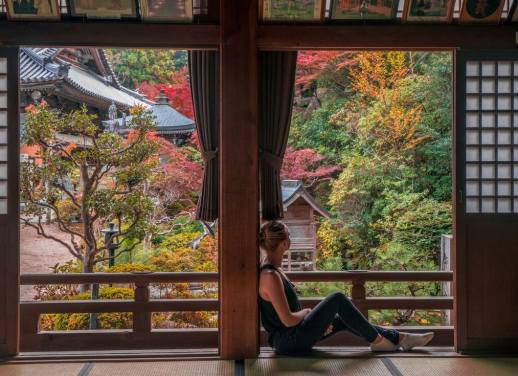To many around the world, the port city of Hiroshima will forever be associated with the tragic events of August 6th 1945, when the town fell victim to the world’s first atomic bomb attack. But when I visited the town, I found it to be a lively city with a wealth of other sights on offer. While monuments to that fateful day are ever-present, Chugoku’s biggest city is also famous for its great restaurants, beautiful gardens and bustling nightlife. With that in mind, I’ve created the perfect guide to seeing the best of Hiroshima in just one day.
Morning in Hiroshima
If you’ve just arrived in the city, jump on the streetcar and take the short trip to Kencho-Mae Station. The Hiroshima Electric Railway, or Hiroden, is Japan’s longest tram network and features a diverse range of trolleys from Asia and Europe. Of particular interest are cars 651 and 652, which, despite being badly damaged during the atomic bombing, are still running today.
Stop for breakfast at Boulanger Cafe Aloft Pasera Branch. With its wide selection of freshly-baked bread and pastries, it’s the perfect place to compose yourself before embarking on the sobering morning ahead.
Make your way towards the river and turn down a narrow side street. Squeezed between two parking lots is a small monument marking the hypocenter of the atomic blast. It was 600 meters above this point that the world’s first uranium bomb, Little Boy, exploded at 08:15 on August 6th 1945. The most devastating single weapon ever used, it killed around 65,000 people within the first day, with a similar number dying of radiation poisoning by the end of the year.
RELATED: VISIT HIROSHIMA ON THIS 14-DAY TRIP THROUGH JAPAN
Go back onto the main road and cross over the river where you will find the collapsing exterior of Atomic Bomb Dome. The most recognizable of Hiroshima’s monuments, it was the only large building near the hypocenter to survive the atomic blast. Originally designed in 1915 to promote the city’s growing industry, it has been preserved in its original state as a stark and powerful reminder of the horrors of modern warfare.
Take some time to walk around the verdant, tranquil surroundings of Peace Memorial Park. Aside from the dome, the most well-known monument is the Cenotaph, which contains the names of everyone known to have died in the bombing. The nearby Peace Flame, first lit in 1964, will continue to burn until the last nuclear bomb has been destroyed.
Next to the Cenotaph is the Hiroshima National Peace Memorial Hall, which contains a variety of displays and personal testimonies from the bombing. Exhibits include a watch stopped at the time of the explosion, glass bottles fused together by the heat of the blast and the scorched remains of a student’s school uniform. I found many of the displays quite harrowing and I would be very careful about visiting with young children.
RELATED: HOW TO DO JAPAN IN JUST 7 DAYS
There are other sites of interest in the park, including the Children’s Peace Monument, which remembers the thousands of children who were killed by the blast. It is topped with a figure of Sasaki Sadako, a young girl who died of radiation poisoning in 1955. A short distance away is the Atomic Bomb Memorial Mound, the resting place for the remains of 70,000 unidentified people, the Peace Bell and the Cenotaph for Korean Victims.
Afternoon in Hiroshima
After visiting the sites, you’ll undoubtedly need time to unwind. I would recommend Nagataya, a traditional restaurant that sells Hiroshima’s famous okonomiyaki. Roughly translating as grilled-whatever-you-like, okonomiyaki is a type of savory pancake featuring cabbage, pork and udon noodles squeezed together and cooked on a griddle. If you think it sounds like a complete mess, you’d be right. But the delicious blend of savory flavors mixed with the sweet tang of okonomi sauce is one of the main highlights of this unpretentious city.
If Nagataya is too busy or you want a more family-friendly experience, Okonomi-mura is just a few blocks away. The top “food theme park” in Japan, it boasts 24 different okonomiyaki stalls in a variety of different styles.
After lunch, head north through the Central Park area, where you may be able to take part in a game of pick-up soccer or baseball. You’ll soon arrive at the leafy grounds of Hiroshima Castle. The building was originally constructed at the end of the 1590s when the area was little more than a series of small fishing villages. Sadly, the fortress was obliterated in the atomic blast. The current structure, built in 1958, is now a museum which tells the story of the city before World War II.
JAPAN CAPTURED ON FILM: A PHOTO ESSAY
Head out of the castle and walk for around 10 minutes, making sure to check your feet for an example of the city’s brightly decorated manhole covers. You will soon come to Shukkei-en, a stunning landscape garden dating from the 1620s. Translating as shrunken scenery garden, there are a variety of landscapes, valleys and mountains sculpted in miniature. You can wander around the ornamental pond, observe the koi (small fish) or take part in a traditional matcha (green tea) ceremony.
For art lovers, Hiroshima’s Prefectural Art Museum is just down the road. It features over 4000 exhibits associated with Asian arts and crafts. However, two other art museums in the city, the Hiroshima Museum of Art and the Museum of Contemporary Art offer exhibitions by more internationally-recognized artists.
LOOKING FOR THE PERFECT DAY TRIP FROM HIROSHIMA? GO TO MIYAJIMA ISLAND
Evening in Hiroshima
As night begins to fall, it’s time to sample Hiroshima’s other delicacy: oysters. My favorite restaurant in the city, Suishin, serves up some of the best in the city. Of particular note are the nama-gaki (raw oysters) and kaki-furai (oysters in breadcrumbs). If, like me, you don’t warm to the slimy treat, its tuna and shrimp dishes are also fantastic.
After dinner, head out to Nagarekawa, a jumbled maze of streets that makes up the city’s entertainment district. You can check out some of the bars on offer, or try pachinko, a type of Japanese pinball in one of the many gaming parlors. And if you’re at a loss for what to do, there’s always karaoke!
Image Credits (top to bottom): iStock, James Getgood x4

